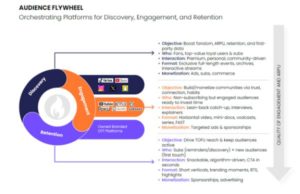
Dominic Harland
CEO, GB Labs
In the old days, post-production may have been viewed as a licence to print money with post houses competing with each other for the biggest city centre facilities, the most inventive décor and the biggest espresso machines.
Even before 2020, this was definitely not the case. It became a much more carefully controlled business, with managers expected to deliver productivity and cost-efficiency. If there was enough margin left for a cappuccino that was a bonus.
Then a global pandemic came along, and everything changed. Travelling into city centres was no longer practical, let alone desirable. Smart editors set up suites at home. Facilities relied on remote freelancers to deliver excellent results.
As we move into the post-covid era, we will see fundamental, structural changes in the post industry. Having tasted the pleasures of working from home, more and more creative people will want to continue doing so.
It is not just the chance to take the dog for a walk in the middle of the day. It is a lifestyle choice. People no longer want to be crammed into commuter trains to London or New York (or spend three hours on the 110 freeway in Los Angeles). And it is not just time that is saved by eliminating the commute - there is a real reduction in the individual’s environmental footprint.

The post facility of the future will certainly still have a city-centre presence, but it will be much smaller. There will always be times when the client wants to attend the edit. Colorists tend to rely on carefully calibrated monitoring conditions across a range of formats which they are unlikely to have access to in their home offices.
But much more of the work will be done remotely, either in smaller facilities closer to the clients (and in areas with lower ground rents), or by individual editors and graphics designers – who may be on staff or freelance – working from their home set-ups.
This is possible because it is now practical to run many post-production functions on inexpensive off-the-shelf computers. Perhaps more importantly, the increasing spread of fast broadband makes practical the intelligent movement of the big, chunky files on which we rely.
There is a clear challenge here, though. That content needs to be moved and shared. Handling the media must be secure, and it must deliver media when it is needed. Most of all, it needs to be automatic and seamless: editors want to get on with cutting the programme; managers want to deliver to their clients on time and on budget.
Individual storage systems come from a range of vendors, suitable for a range of file formats, and a range of requirements for security and credentials. Facilities and individuals look to choose their storage systems based on their individual requirements and reinvesting in a common platform is unlikely to be economically feasible.
With a central pool of storage, it is (relatively) simple to manage file naming and log-ins. But the future will demand multiple islands of storage: in remote facilities, in homes, and of course in the cloud.
What is needed is some way to make this geographically distributed, multi-format set of storage sub-systems appear as a single, common pool with a single sign-in. Users should have access to the material they need without being overwhelmed with too much unnecessary information. Finally, all files should be maintained in consistent synchronisation, and there should be no doubt about the master file, so no work is wasted on outdated versions.
This is a challenge. You need to address connectivity, data management and access controls. The layer of automation and communication that sits below the user data must use intelligence and business rules to manage this, so it appears seamless.
Management and analytics need to be virtualised too, so that the IT manager can log on from a web browser anywhere in the world and see the state of the storage as a whole, gain metrics, trouble shoot and manage the content flows.
Those content flows are entirely dependent upon acceleration. That means not only using the latest data communication techniques to move media from A to B as quickly as possible, but also managing workflows by ensuring that the right content is pre-loaded into a remote store in time for the work to start. Hot caches of solid-state storage (Flash Cache is the GB Labs version) provide rapid access.
This is the background to our Unify Hub products. It applies intelligence to combine on premise and cloud storage. That on premise storage can be sub-systems from GB Labs, or it can come from any respected vendor of storage suitable for media. The translations between file formats and credentials are hidden in Unify Hub.

The storage can also be in the cloud: Unify can appear as an AWS S3 end point. So, if you have encoding or transcoding processes in the cloud, which typically depend upon S3 storage to manage the data, that can now be incorporated into the over-arching storage system.
It can also do the reverse: the result of anything processed in the cloud can be directly mapped into the unified storage. That means the output can appear at the central facility, and/or one or more remote facilities and home studios.
Of course, the big advantage of the cloud is its flexibility. Post house managers have a regular debate about whether to pitch for large chunks of business – finishing major series, for example – because the income (and prestige) generated needs to be offset against the cost of investing in new hardware to support it, hardware which may be unused after the project is completed, while still demanding storage space and air conditioning.
Processing and storage in the cloud allows you to increase your capabilities while you need it, slim down again when the project is over. Integrated remote working allows you to add new locations, like the home studios of additional freelancers, to work on the project or to handle the routine jobs while your star editors do the new job. Seamless access to shared storage means you can address a wider pool of talent.
The future will bring new challenges and new ways of working. There is no right or wrong about distributed workspaces and workflows: every business will set its own priorities. But the core functionality any system will need lies in making sure everyone has access to the right media; careful and secure synchronisation of files to avoid confusion; and simple and secure access so users can forget the underlying technology, and even where content resides, and just concentrate on making the best programme.
Unify Hub from GB Labs solves those issues. With it, you have the route to successful distributed, remote and home working.









